Fix Windows Modules Installer Worker High CPU Usage
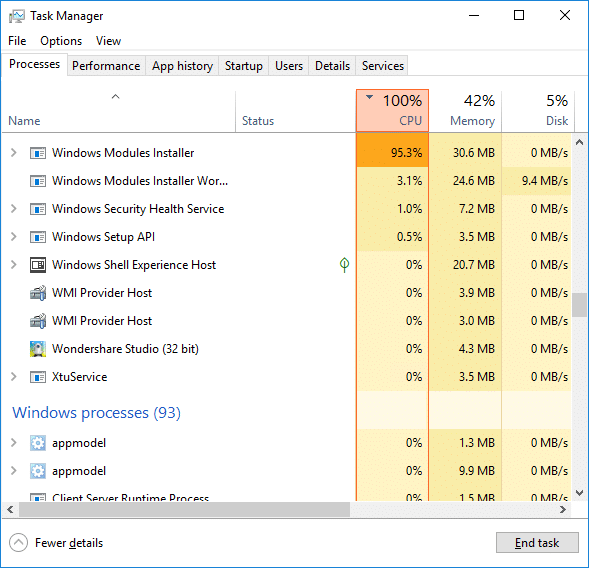
If you are facing the High CPU Usage by Windows Modules Installer Worker, then don’t worry as thousands of other users are also facing the similar problem and therefore, there are many working fixes which we will be discussing today in this article. To verify if you are facing this issue open Task Manager (Ctrl + Shift + Esc) and you will find that the Windows Modules Installer Worker is consuming High CPU or Disk Usage.

专业提示: You may leave your PC overnight or for a few hours to see the issue rectify itself once the Windows is finished downloading and installing updates.
What is Windows Modules Installer worker (WMIW)?
Windows Modules Installer worker (WMIW) is a service which takes cares of automatically installing Windows Update. According to its service description, WMIW is a system process that enables automatic installation, modification, and removal of Windows updates and optional components.
This process is responsible for finding new Windows Update automatically and installing them. As you might be aware that Windows 10 automatically install newer builds (i.e. 1803 etc.) via Windows Updates, so this process is responsible for installing these updates in the background.
Although this process is called Windows Modules Installer worker (WMIW) and you will see the same name in the Processes tab in the Task Manager, but if you switch to Details tab, then you will find the name of the file as TiWorker.exe.
Why Is Windows Modules Installer worker Using So Much CPU?
As Windows Modules Installer worker (TiWorker.exe) runs continuously in the background, sometimes it might utilize high CPU or disk usage when installing or uninstalling Windows Updates. But if its constantly using high CPU then the Windows Modules Installer worker may have become unresponsive while checking new updates. As a result, you may be experiencing lags, or your system might hang or freeze completely.
The first thing users do when they experience freezing, or lagging issues on their system is to restart their PC, but I assure you that this strategy won’t work in this case. This is because the issue will not resolve by itself until and unless you fix the underlying cause.
Fix Windows Modules Installer Worker High CPU Usage
确保创建一个还原点,以防出现问题。
Windows Modules Installer Worker (WMIW) is an important service, and it should not be disabled. WMIW or TiWorker.exe is not a virus or malware, and you cannot just delete this service from your PC. So without wasting any time let’s see How to Fix Windows Modules Installer Worker High CPU Usage 借助下面列出的故障排除指南。
方法 1:运行 Windows 更新疑难解答
1. 按 Windows 键 + I 打开 个人设置 然后点击 更新和安全图标。
![]()
2. 从左侧菜单中选择 疑难解答 在“起床并跑步“ 点击 Windows更新。

3. 现在点击“运行疑难解答”在 Windows 更新下。
4. Let the troubleshooter run, and it will automatically fix any issues found with Windows Update taking forever.
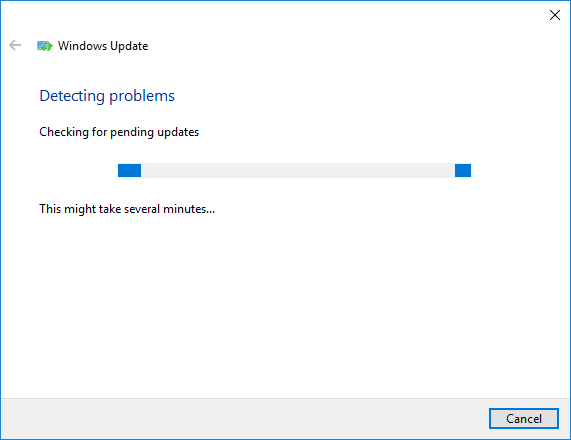
Method 2: Manually Check for Windows Updates
1. 按 Windows 键 + I,然后选择 更新和安全性。
2. 从左侧菜单中单击 Windows更新。
3. 现在单击“检查更新”按钮来检查是否有任何可用的更新。

4. 如果有任何更新待处理,则单击 下载并安装更新。

5. 下载更新后,安装它们,您的 Windows 将变为最新版本。
Method 3: Configure Windows Update to Manual
警告: This method will switch Windows Update from automatically installing the new updates to the manual. This means you have to manually check for Windows Update (weekly or monthly) to keep your PC secure. But follow this method, and you can again set the Updates to Automatic once the issue is resolved.
1.按Windows键+R然后输入 SERVICES.MSC 并按Enter键。

2. Scroll down and find Windows模块安装 列表中的服务。
3。 右键单击 Windows模块安装程序服务 并选择 属性。
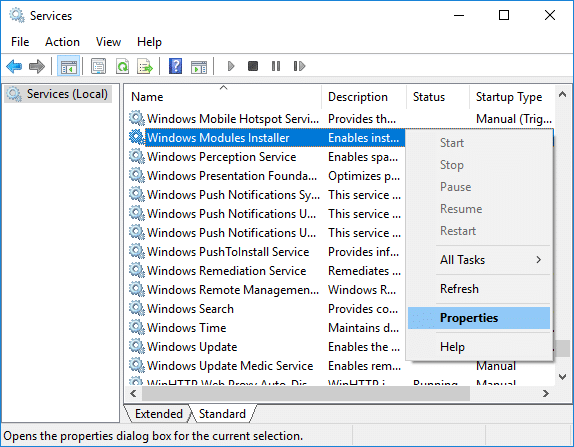
4。 现在点击 Stop 停止 then from the “启动类型” drop-down select 手册。
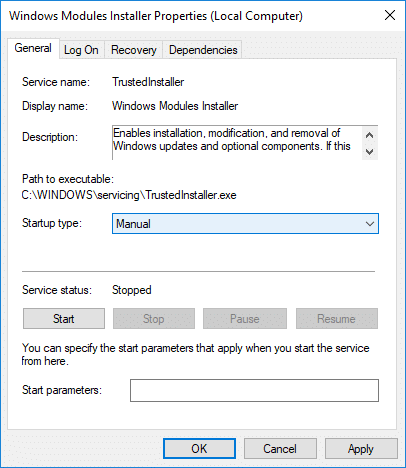
5. 单击应用,然后单击 确定。
6. Similarly, follow the same step for the Windows Update service.

7. 重新启动电脑以保存更改。
8. 再来一次 检查 Windows Updates Manually 并安装任何待处理的更新。
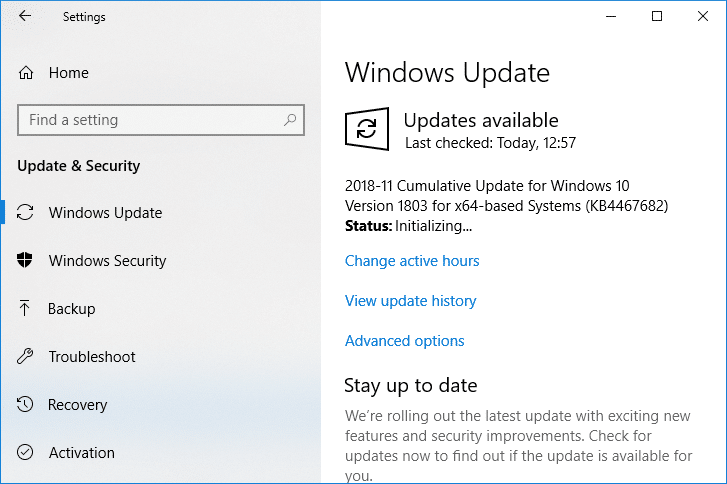
9. Once is done, again go back to services.msc window and open the Windows Modules Installer & Windows Update Properties 窗口。
10。 设置 “启动类型” 至 自动表 并点击 Start 开始. Then click Apply followed by OK.
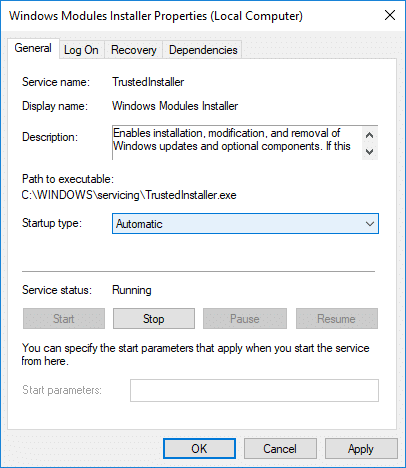
11. 重新启动电脑以保存更改。
方法 4:运行系统维护疑难解答
1. 按 Windows 键 + R,然后输入 control 并按 Enter 键打开 控制面板。

2. 搜索疑难解答并单击 故障排除。

3。 接下来,单击 查看全部 在左侧窗格中。
4。 点击 “System Maintenance” 运行 System Maintenance Troubleshooter.

5. 故障排除程序可能能够 Fix Windows Modules Installer Worker High CPU Usage, but if it didn’t, then you need to run System Performance Troubleshooter.
6. 打开命令提示符。用户可以通过搜索来执行此步骤 'Cmd的' 然后按Enter键。

7. 在 cmd 中输入以下命令并按 Enter 键:
msdt.exe / id PerformanceDiagnostic
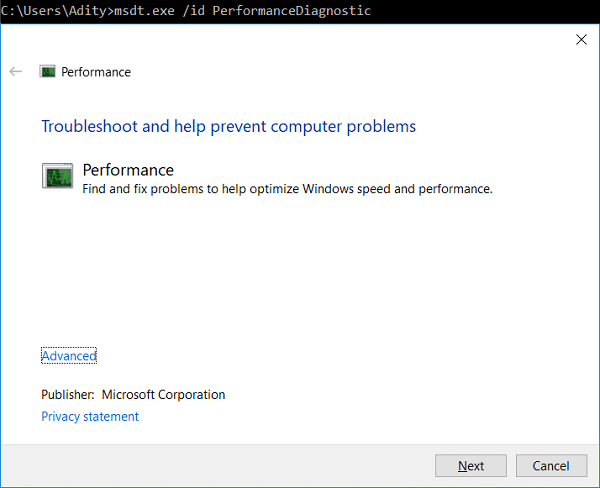
8. Follow the on-screen instruction to run the troubleshooter and fix any issues find the System.
9. Finally, exit the cmd and reboot your PC.
Method 5: Disable Automatic Maintenance
Sometimes Automatic Maintenance can conflict with the Windows Modules Installer Worker service, so try to disable Automatic Maintenance using this guide and see if this fixes your issue.
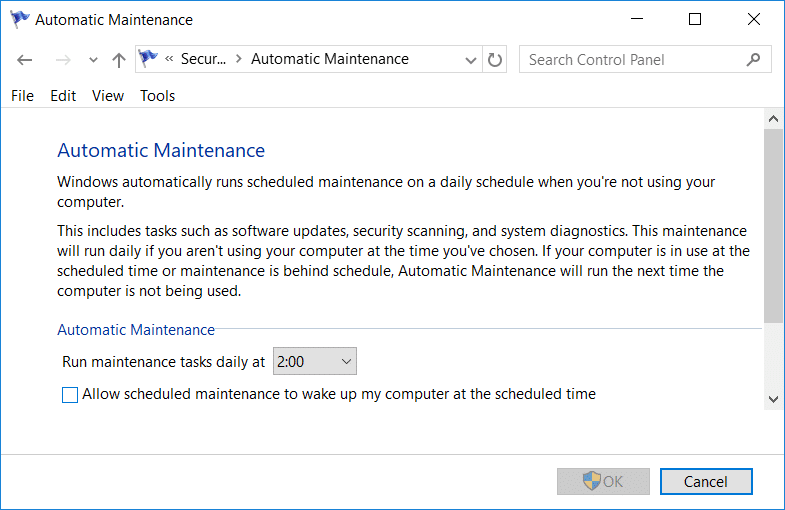
Although disabling Automatic Maintenance is not a good idea, but there might be some case where you need to actually disable it, for example, if your PC freezes during automatic maintenance or Windows Modules Installer Worker High CPU Usage issue then you should disable maintenance to troubleshoot the issue.
Method 6: Run System File Checker and DISM
1. 打开命令提示符。用户可以通过搜索来执行此步骤 'Cmd的' 然后按Enter键。
2.现在在cmd中输入以下内容并按回车键:
Sfc /scannow sfc /scannow /offbootdir=c: /offwindir=c:windows (如果上述失败,请尝试这个)

3. 等待上述过程完成,完成后重新启动电脑。
4. 再次打开 cmd 并键入以下命令,并在每条命令后按 Enter 键:
Dism /Online /Cleanup-Image /CheckHealth Dism /Online /Cleanup-Image /ScanHealth Dism /Online /Cleanup-Image /RestoreHealth

5. 运行 DISM 命令并等待其完成。
6. 如果上述命令不起作用,请尝试以下命令:
Dism /Image:C:offline /Cleanup-Image /RestoreHealth /Source:c:testmountwindows Dism /Online /Cleanup-Image /RestoreHealth /Source:c:testmountwindows /LimitAccess
请注意: 将 C:RepairSourceWindows 替换为您的修复源(Windows 安装或恢复光盘)。
7. 重新启动您的电脑以保存更改并查看是否能够 Fix Windows Modules Installer Worker High CPU Usage.
方法 7:执行干净启动
Sometimes 3rd party software can conflict with Windows and can cause the issue. To Fix Windows Modules Installer Worker High CPU Usage issue,您需要在PC上执行干净启动并逐步诊断问题。
Method 8: Set your WiFi as Metered Connection
请注意: This will stop Windows Automatic Update, and you will need to manually check for Updates.
1. 按 Windows 键 + I 打开 个人设置 然后点击 网络和互联网。

2. 从左侧菜单中选择 无线网络连接。
3. Under Wi-Fi, 点击 on your currently connected network (WiFi).
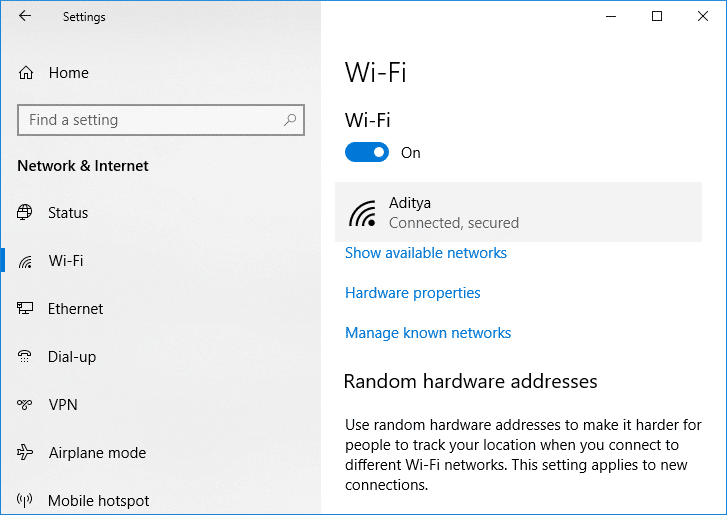
4. Scroll down to Metered connection and 启用切换 在“设置为计量连接“。
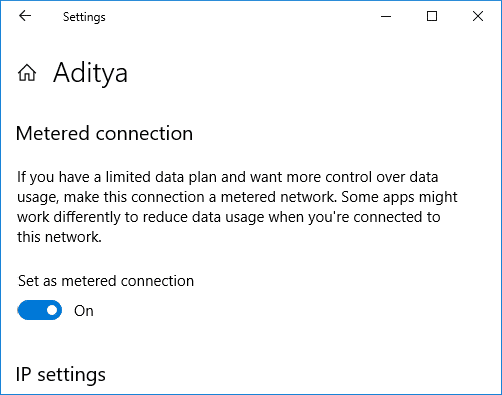
5. Close Settings and reboot your PC to save changes.
推荐:
就这样,你就成功了 Fix Windows Modules Installer Worker High CPU Usage 但如果您对本教程仍有任何疑问,请随时在评论部分提问。
